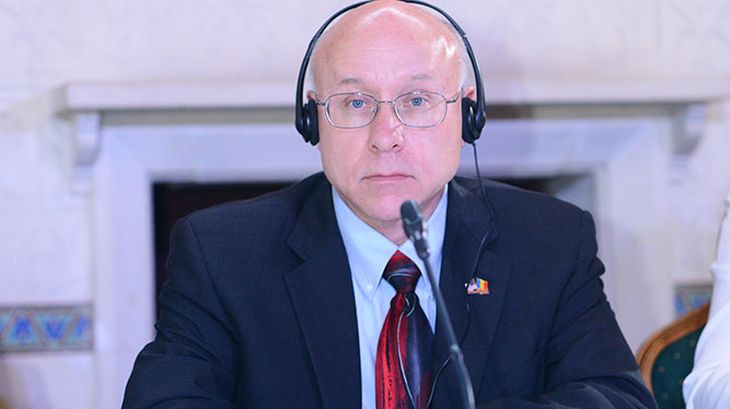This is the transcript of the message delivered by John Knapp, Managing Director at ExxonMobil in Romania and Chairman of Romanian Black Sea Titleholders Association (RBSTA), during the Energy Strategy Summit, held on June 4 at the Cantacuzino Palace in Bușteni.
Good morning. Thank you, for the opportunity to express observations about the national energy strategy, Romania’s potential in the oil and gas fields, and the importance of a long term policy when making decisions that impact this industry. I think you can compare a strategy to a story and some stories are built from the beginning and you start in a new add-on to that with a chapter and the story evolves and it grows and then at the end sometimes, often, you have a surprise.
Now, a strategy is a different kind of story where you need to think about what the end is going to look like, as you start building the strategy. This is important for us in Romania now, because as the energy strategy is being crafted we really need to be thinking about what we want this ending to look like.
From what we have heard so far this morning, clearly there is a desire to grow Romania’s domestic production and the indigenous resources here. To address this issue I’d like to summarize the role of the investors involved in the exploration activities for offshore and some of the challenges associated with developing these new energy resources.
In the oil and gas business, uncertainty is part of the reality that we have to deal with. You can argue whether that’s a desirable thing or whether that’s undesirable, but the reality is that, in a long term business like this, we have to recognize if there are some certainties and we have to be able to manage uncertainties. That’s an important part in developing reliable and affordable energy, which is important for a successful energy strategy. The Black Sea Title Holders believe that the Romanian sector of the Black Sea is a promising and an encouraging area, but there are still a lot of challenges facing the central investors and the central developers of those offshore resources.
Is important to emphasize that these potential projects offshore are very complex and characterized by a number of specific challenges that need to be recognized. First, although Romania has a well-developed onshore industry and a rich history in the oil and gas development, the offshore sector is still an emerging area with a lot of uncertainty, and the resources that are out there have a potential that could be developed.
In 12 explorations going on the investors are the ones who take all the risk and absorb all the cost of the exploration phase. The exploration phase can last 10 to 15 years to fully value whether those resources are potentially developed during that time.
The second point I wanted to mention is that these offshore investments involve cutting edge technology and because of that they are expensive. In the offshore, Romania has the added complexity that is located in a geographically challenging area and that access is limited through the straits of Bosporus; the equipment that is necessary to do this work needs to be brought in and immobilized through that area, which adds to the cost.
Besides, there is currently no offshore infrastructure, all of that would need to be built by the investors. The geologic knowledge in the area is something that the investors are looking to reduce, but for this to continue to happen, the investors need the long term certainty and they need a stable and competitive regulatory environment that would last through the lifetime of these multi-decade long projects.
Without regulatory stability those investments aren’t going to happen. We look forward to working with the Romanian authorities on moving forward to help with the development of the Black Sea and we think that, with this cooperation, the energy strategy of Romania can have a happy ending.
